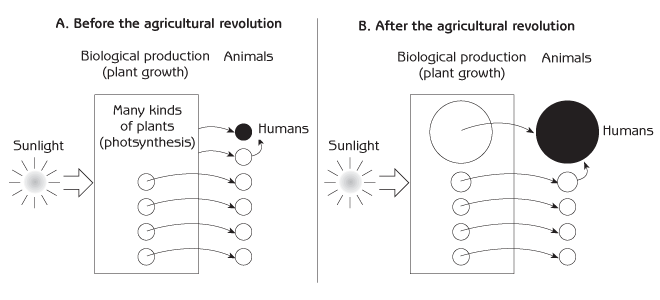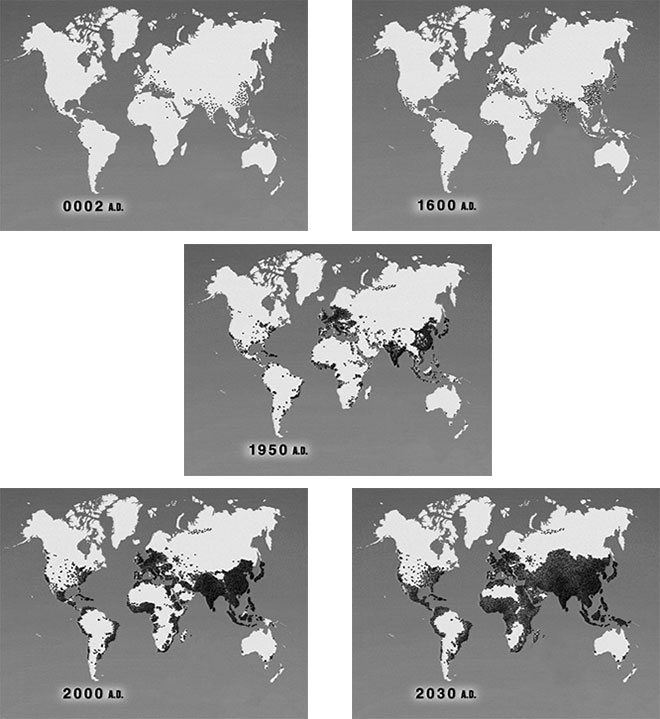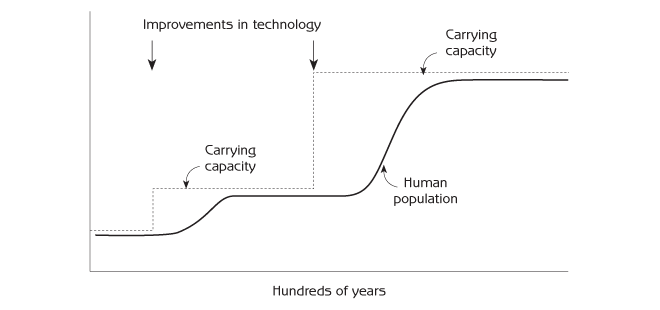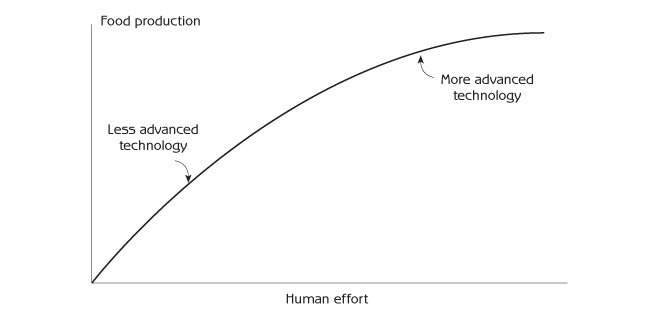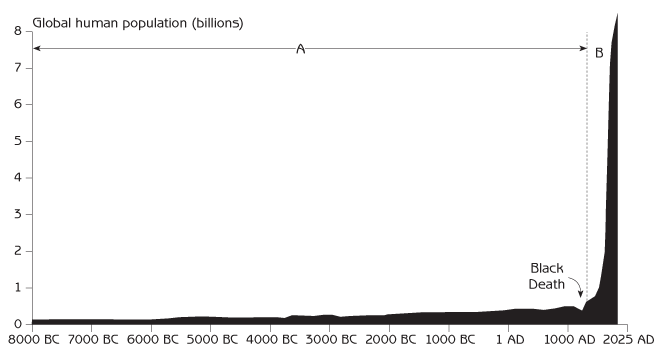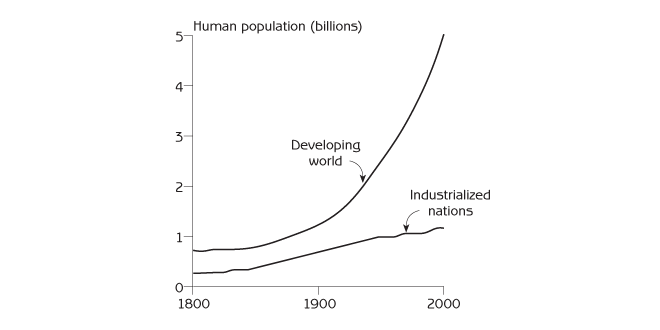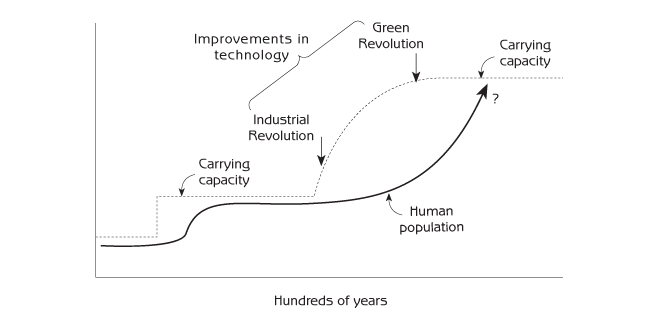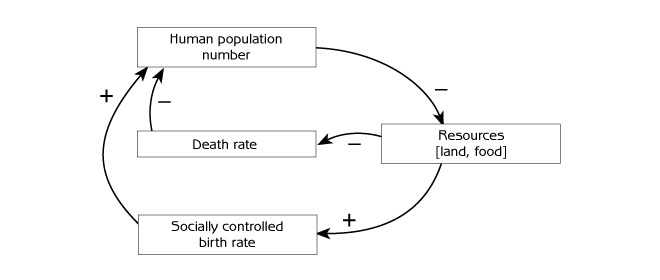
“Монгол Улсын мянганы хөгжлийн зорилтод суурилсан Үндэсний хөгжлийн Цогц бодлого” , “Монгол Улсын Шинжлэх ухаан, технологийг 2007-2020 онд хөгжүүлэх Мастер төлөвлөгөө”, “Монгол Улсад Үндэсний инновацийн тогтолцоог хөгжүүлэх хөтөлбөрт” (“Инновац хөтөлбөр”-т) Шинжлэх ухаан, технологи, инновацийн (ШУТИ) талаар дэвшүүлсэн зорилтуудыг 2008 оны УИХ-ын ээлжит сонгуулийн дараахь МУ-ын шинэ Засгийн газрын зүгээс амжилттай хэрэгжүүлэхийн тулд ШУТИ-ийн салбарт бүтэц, удирдлага, менежментийн шинэчлэл зайлшгүй шаардлагатай хэмээн үзэж ийм нэгэн төсөөлөл саналыг боловсруулав. Түүний үндсэн үзэл баримтлал дараах гурван суурь шинэчлэлтийн бодлогод тулгуурлагдсан болно, үүнд:
Нэгд: БСШУЯ-ны Шинжлэх ухаан, технологийн газрын бүтэц, үйл ажиллагааны хүрээг эрс өргөтгөж өөрчлөх (жишээлэхэд, ШУТИ-ийн бүх салбарт мониторингийн хүчтэй тогтолцоог бий болгох, яамдын шинжлэх ухаан, технологийн зөвлөлүүдийн үйл ажиллагааг удирдан зохицуулах, ШУТИ-ийн төрийн бодлогын боловсруулалт, зохицуулалт, менежментийг төвлөрүүлэх, экспертизийн улсын албыг бий болгох, ШУТИ-ийн хөрөнгө оруулалт, санхүүжилт, хүний нөөцийн нэгдсэн бодлогыг хэрэгжүүлэх зэрэг)
Хоёрт: төр, бизнесийн болон, төр бусад субъектүүдийн түншлэл, хамтын ажиллагааг хүчтэй болгох, давын өмнө ШУТИ-ийн санхүүжилтийн олон төрөлтөт тогтолцоог бүрэлдүүлэх (ШУТИ-ийн үйл ажиллагаанд төрийн оролцоо, дэмжлэгийг сайжруулах, түншлэлийн бүх хэлбэрийг хөгжүүлэх, ШУТИ-ийн их семинартай болох, их, дээд сургуулиудын консорциум-(ИДСК)-ын оролцоо, төлөөллийг ШУТИ-ийн менежментэд хүчтэй болгох, мониторингийн ил тод байдлыг хангах, эрдэмтэд, бизнесч нарын оролцоог нэмэгдүүлэх, инновацийн зорилтот сангуудыг байгуулах, төр, бизнесийнхний хамтарсан инноваци, шинэ санааны биржийг бий болгох, судалгаа, боловсруулалтын ажилд өрсөлдөөн, урамшууллын механизмыг хүчтэй нэвтрүүлэх зэрэг)
Гуравт: Судалгаа боловсруулалт ба бизнесийн холбоо интеграцийг гүнзгийрүүлж, үйлдвэрлэл, үйлчилгээний субъектүүдийн инноваци идэвхижлийг сайжруулан, шинэ технологи, инноваци нэвтрүүлэлтийн тогтолцоог өөрчилж шинэчлэх, үр дүн нэвтрүүлэлт, хөрөнгө оруулалтын мониторинг-менежментийн шинэ бүтэц, горимыг бий болгох (үр дүн, инноваци нэвтрүүлэлтийн мониторинг- хяналтын хүчтэй тогтолцоог бий болгох, хөрөнгө оруулалтын бодлогыг инновац идэвхижилтэй холбох, технологийн дэвшил, инноваци нэвтрүүлэлтийг дэмжихүй гааль, татварын болон бусад урамшууллыг хэрэгжүүлэх, технологи дамжуулалт, инноваци нэвтрүүлэлтийн эрхзүй, аргачлалын тааламжтай орчин, механизмуудыг бүрэлдүүлэх, шинжлэх ухаан, технологийн төслийн захиалга, хэрэгжүүлэлт, нэвтрүүлэлтийн нэгдмэл горимыг бий болгох, үйлдвэрлэл, үйлчилгээний салбарт технологийн шинэчлэл, технологийн соёл, стандартжуулалтын хүчтэй хяналтын бодлогыг төр, бизнесийнхэн хамтарч хэрэгжүүлэх зэрэг)
Эдгээр суурь шинэчлэлийн гурван чиглэл нь эдүгээ хэрэгжүүлж байгаа бодлогын баримт бичгүүдийн зорилго, зорилтуудтай шууд уялдаатай гэдгийг тэмдэглэе. Тухайлбал, “Цогц бодлогын” “4.7.3. Шинжлэх ухаан, технологийн бодлого” хэсгийн “… шинжлэх ухаан, технологийн салбарт бүтцийн өөрчлөлт хийж боловронгуй болгох”, “… шинжлэх ухаан, технологийн салбарын удирдлага, үйл ажиллагаа, санхүүжилтийн механизмыг боловсронгуй болгох”, “… шинжлэх ухаан технологи, инновацийн хөтөлбөр, төслийн захиалга, хэрэгжүүлэлтэд хувийн хэвшлийн оролцоог эрс нэмэгдүүлэх”, “Мастер төлөвлөгөөний” “стратеги 1.2: ШУТ-ийн салбарын удирдлага, зохион байгуулалт, санхүүжилтийн механизмыг боловсронгуй болгоно”; “стратеги 2.1: Шинжлэх ухаан, үйлдвэрлэлийн үр ашигтай хамтын ажиллагааг дэмжиж эдийн засгийн хөшүүргүүдийг бий болгоно”, “стратеги 4.1: Аж үйлдвэрийн салбарт технологийн инновацийн эрэлт хэрэгцээг нэмэгдүүлнэ”; “стратеги 4.2: ШУТ-ийн салбарт төрийн болон хувийн хэвшлийн хамтын ажиллагааг өргөжүүлнэ”, “Инноваци хөтөлбөрийн” “стратеги 1. Шинжлэх ухаан, үйлдвэрлэлийн тогтвортой хамтын ажиллагаа, хамтарсан судалгааг дэмжин урамшуулах эдийн засгийн хөшүүргүүдийг бий болгоно”, “стратеги 3. Инновацийн дэд бүтцийн элементүүдийг бүрдүүлэн хөгжүүлнэ” гэсэн зорилго, зорилтуудаас үүдэлтэйгээр томъёологдож байгаа болно
ШУТИ-ийн салбарын удирдлагыг боовсронгуй болгох асуудал юуны өмнө түүний субъектийн эрх, үүргийн хүрээг зөв томъёолж тодорхойлохоос эхлэх учиртай. үүнээс үүдэн манай дэвшүүлж буй саналын цөм нь:
Одоогийн БСШУЯ-ны Шинжлэх ухаан, технологийн газрын үйл ажиллагааны хүрээ, эрх үүрэг, статусыг нэмэгдүүлэн өргөжүүлж Үндэсний (улсын) хэмжээний Шинжлэх ухаан, технологи, инновацийн газрыг (хороо, агентлаг газар) байгуулж, шинжлэх ухаан, технологи, инновацийн үйл ажиллагааны менежмент, мониторинг, зохицуулалтыг төвлөрүүлэн хариуцуулах хэрэгтэй гэж томъёологдож байна.
Шинжлэх ухаан, технологи, инновацийн удирдлага, менежментийг ийнхүү төвлөрүүлэн идэвхижүүлэх асуудлыг доор нэрлэсэн арга хэмжээнүүдтэй хослуулаж (зэрэгцүүлж) шийдвэрлэх ёстой гэж үзэж байгаа болно, үүнд:
а) судалгаа, боловсруулалт, инновацийн салбарт хууль, эрхзүйн шинэ орчныг буй болгох, юуны өмнө шинжлэх ухаан, технологийн тухай, технологи дамжуулалт, инноваци нэвтрүүлэлтийн тухай зэрэг хуулиудыг шинэчлэх, шинээр боловсруулан мөрдүүлэх,
б) монголын нийгэм, эдийн засагт үйлчилж буй одоогийн зарим хууль, тогтоомжид нилээд зохицуулалтыг хийж өгөх, үүнд: компанийн тухай, гаалийн тухай, татварын тухай, шударга өрсөлдөөний тухай зэрэг хуулиудад зохих өөрчлөлтийг оруулнa;.
в) шинжлэх ухаан, технологи, инновацийн шинэ орчныг бий болгох чиглэлээр төр-бизнесийн түншлэлийг хөгжүүлэх, төрөөс биснесийнхэнд туслах дэмжлэгийг хүчтэй болгохуй доор эрх, аргазүйн шинэ механизмуудыг боловсруулан мөрдөх,
г) эрдэм, мэдлэгийн талаар шинэ хандлага-ойлголтыг (шинэ парадигмыг) монголын нийгэмд (ялангуяа төр, бизнесийн субъектүүдэд) бий болгож менежментийн орчин үеийн боловсронгуй арга барилыг нэвтрүүлэх (жишээлэхэд системт хандлага, прогнозот менежмент, е-мониторинг, е-удирдлага, оюуны өмчийн шинэ горим, мэдлэгийн дээдлэл, технологийн оюунжуулал, бүх нийтийн эрдэм оюуны боловсрол зэрэг)
Манай энэ санал-төсөөлөл ШУТИ-ийн удирдлагын бүтэц, менежментийн өөрчлөлтийн талаар байж болох нэгэн нилээд өөдрөг хувилбар. Түүнийг “гагцхүү зөв” гэж үзэж болохгүй нь ойлгомжтой.
Үндэсний хэмжээний өргөн эрх үүрэг бүхий Шинжлэх ухаан, технологи, инновацийн газрыг (ШУТИГ) байгуулахад дараах хоёр хувилбар байж болох, үүнд:
1. БСШУЯ-ны бүтцэд хэвээр нь үлдээх
2. ШУТИГ-ыг Үндэсний агентлагийн статустайгаар биеийг нь даалгаж байгуулах
ШУТИГ-ын нарийвчилсан бүтэц, горим, үйл ажиллагаа нь энэ хоёр хувилбарын алийг нь сонгохоос тодорхой хэмжээгээр хамаарна. Гэвч бид тийм хамаарлыг зориуд үл анхааран “онолын нэгэн” бүтцийн тухай санал гаргаж байгаа болно. Энэ Шинжлэх ухаан, технологи, инновацийн газар агентлаг нь 7 үндсэн алба, хэлтэстэй байхаар төсөөлөгдөж байгаа. Үүнд:
Одоо эдгээр алба, хэлтсийн зорилго, үүрэг, үйл ажиллагааны чиглэлийг арай дэлгэрэнгүй томъёолоё.
1. Шинжлэх ухаан, технологи, инновацийн бодлогын алба нь шинжлэх ухаан, технологи, инновацийн асуудлаар төрийн бодлогыг боловсруулах, төлөвлөх, шийдвэр гаргах (гаргуулах), бодлого, стратегийн асуудлаар төр, бизнесийн болон төр, бусад субъектүүдийн хамтын ажиллагаа, түншлэлийн зорилтуудыг томъёолж хэрэгжүүлэх үндсэн үүрэгтэй гэж төсөөлөгдөж байна.
Тус Алба ШУА, Их, дээд сургуулийн консорциум (ИДСК), Үндэсний худалдаа аж үйлдвэрийн танхим (ҮХАҮТ), Яамдын Шинжлэх ухаан, технологийн (ШУТ) зөвлөлүүдтэй хамтран ажиллах байнгын ажиллагаатай семинар-зөвлөлдөх уулзалттай (түүнийг “Бодлогын семинар” гэж нэрлэж болох) байвал зохино.
Алба нь Хөрөнгө оруулалт, санхүүжилтийн болон Хяналт-мониторингийн албуудтай бодлого, шийдвэрээ зохицуулах, зөвлөлдөх нэгдсэн зөвлөлтэй (“Зохицуулах зөвлөл” гэе) байх нь зүйтэй.
Тус ШУТИ бодлогын алба дараахь чиглэлд үйл ажиллагааг эрхлэнэ.
-Шинжлэх ухаан, технологийн болон инновацийн бодлого, стратеги (гадаадын туршлага, монголын онцлог); -төр, бизнесийн болон төр, бусад субъектүүдийн түншлэл, хамтын ажиллагааны бодлого, механизмууд, менежмент; -шинжлэх ухаан, технологийн салбар дахь оюуны өмч, патент, лицензийн асуудлууд (Технологи дамжуулалт, инновацийн албатай хамтрана); -шинжлэх ухаан, технологийн эрхзүй, онол, аргачлалын асуудлууд, тааламжтай орчин, механизмууд; -монголын нийгэм, эдийн засаг дахь технологийн хамгаалалт, технологийн соёл, стандартын бодлого; -яамдын шинжлэх ухаан, технологийн зөвлөлүүдийн үйл ажиллагааны зохицуулалт, горим, менежмент, оновчлол (Хөрөнгө оруулалт, санхүүжилтийн албатай хамтрана); -шинжлэх ухаан, технологийн салбар дахь хүний нөөцийн бодлого (ШУА, ИДСК-тай хамтрана); -судалгаа, боловсруулалтын салбарын богино, урт хугацааны прогнозууд; -Шинжлэх ухаан, технологийн хүрээлэнгийн (шинээр байгуулна) судалгаа боловсруулалтын ажлын мониторинг (ШУА-тай хамтрана)
2. Хяналт-мониторингийн алба. Энэ албаны үндсэн зорилго нь ШУТИ-ийн салбар дахь үйл ажиллагааны бүх төрлийн мониторингийн мэдээллийг (статистик мэдээ, бүртгэл, шуурхай ба стратегийн хяналтын мэдээлэл, үр дүн, инноваци нэвтрүүлэлтийн мэдээ, гүйцэтгэл, удирдлага-статистикийн баазууд, стандартжуулалтын мэдээ, бүртгэлийг) цуглуулах, бааз байгуулах, ШУТИГ-ын удирдлага, албадыг захиалгаар болон байнга үйлчлэх, санаачилгаар мэдээлэх, дүн шинжилгээт мэдээлэл, дүгнэлтийг боловсруулах, бэлтгэхэд чиглэгдэнэ.
Тус Алба Монголын нутаг дэвсгэр дээр үйл ажиллагаа явуулж буй төрийн ба бизнесийн болон бусад бүх байгууллагаас ШУТИ-ийн асуудлаар мэдээ авах, мэдээллийг шаардах эрхийг эдэлж, тэдний хэрэгцээт мэдээллийг гарган өгч үйлчлэх үүргийг хүлээнэ. Хяналт-мониторингийн мэдээллийн нууцлалын зэргийг Засгийн газраас тодорхойлно.
Албаны харьяанд дараах мэдээлэл-мониторингийн төрөлжсөн баазууд ажиллах ёстой гэж төсөөлөгдөж байгаа, үүнд: -оюуны өмч, дотоодын патент лицензийн (шинээр байгуулах); -төсөл, сэдэвт ажлын тайлангийн (ийм бааз одоо ажиллаж байгаа); -эрдэмтэд, судлаачдын (“Эрдэмтэн” бааз одоо ажиллаж байгаа); -технологийн дамжуулалт, инноваци нэвтрүүлэлтийн (шинээр байгуулна); -шинжлэх ухаан, технологийн статистик мэдээ, бүртгэлийн (ийм бааз одоо үндсэндээ ажиллаж байгаа); -төсөл, сэдэвт ажлын явцын менежментийн (шинээр байгуулах); -стандарт, технологийн түвшингийн (шинээр байгуулах); -жижиг, дунд үйлдвэрлэлийн технологийн (шинээр байгуулах, үүнийг шинэ технологийн биржтэй хамтатгаж болно); -консальт болон инжинирингийн үйлчилгээний мэдээллийн зэрэг төрөлжсөн (бие даасан) баазуудыг улсын хэмжээнд сүлжээний горимоор ажиллуулбал зүйтэй.
Хяналт-мониторингийн албаны үйл ажиллагааны үндсэн чиглэл нь:
-шинжлэх ухаан, технологи, инновацийн салбарын мониторинг-статистикийн бүх төрлийн мэдээлэл, тоо баримт, дүн шинжилгээ, лавлагааг бэлтгэх, боловсруулах, хадгалах, үйлчлэх; -мэдээллийн төрөлжсөн баазуудын аргачлал, онол-эрхзүйн үндэс, мета-сангийн хөтлөлт, баазуудын менежмент; -стандартжуулалт, технологийн түвшингийн мониторинг; -үр дүн, инновац нэвтрүүлэлтийн мониторинг, тойм мэдээлэл; -шуурхай удирдлага, менежментийн зохицуулалтын санал, үндэслэл, дүн шинжилгээ.
3. Хөрөнгө оруулалт, санхүүжилтийн алба. Энэ Албаны үндсэн үүрэг нь ШУТИ-ийн хөрөнгө оруулалт, санхүүжилтийг төлөвлөх, зохицуулах, хянах, хөрөнгө оруулалтын тааламжтай орчин, механизмыг бүрэлдүүлэх, судалгаа, боловсруулалт, үйлдвэрлэлийн салбарт хөрөнгө оруулалт, санхүүжилтийн үр ашигт тогтолцоог бүрэлдүүлэхэд чиглэгдэнэ.
Албаны үйл ажиллагааны хүрээнд ШУТИ-ийн асуудлаар улсын төсвийн ба гадаадын хөрөнгө оруулалт, тусламж, зээлийг зохицуулахын зэрэгцээ бизнесийнхэн болон бусад байгууллагын хөрөнгө, хандив, санхүүжилтийн оролцоо, дэмжлэг, зохицуулалтыг эрхлэнэ. ШУТИ-ийн бүх салбарт хувийн хэвшлийнхний санхүүжилт, хөрөнгө оруулалт, технологийн дэвшлийг дэмжиж, хорших болон хамтран ажиллахыг зорино. Судалгаа, боловсруулалтын салбарт туршилт, лабораторийн баазыг өргөжүүлэх, хүчин чадлын бололцоог нь нэмэгдүүлэх арга хэмжээг авна.
Тус Албаны бүтцийн бүрэлдэхүүнд дараахь сангуудын үйл ажиллагааг эрхлэх нь зүйтэй гэсэн саналтай, үүнд: -шинжлэх ухаан, технологийн сан (одоогийн ШУТ Сан); -инновацийг дэмжих сан (шинээр байгуулах); -залуу эрдэмтнийг дэмжих сан (одоогийн хөтөлбөрийн чиглэлээр); -грант төслүүдийн тусгай сан (шинээр байгуулах); -суурь судалгааны сан (шинээр байгуулах); -жижиг, дунд үйлдвэрийн сан (одоо хэрэгжүүлж байгаа хөтөлбөрийн хүрээнд); -венчур сан (инноваци эзэмших эрсдэлийн санг шинээр байгуулах); -тоног төхөөрөмжийн лизингийн сан ( шинээр байгуулах); -мэдлэгийг дэмжих сан (менежмент, программ хангамж, зайн сургалт, туршлага эзэмших арга хэмжээнд зориулна).
4. Технологи дамжуулалт, инновацийн алба. Тус Алба нь үйлдвэрлэл үйлчилгээний субъектүүдийн(өмчийн төрөл хамаарахгүй) технологийн шинэчлэл, инноваци нэвтрүүлэлтийн үйл ажиллагааны менежментийг эрхэлж тааламжтай орчин, нөхцөл, механизмуудыг боловсруулж нэвтрүүлнэ. Энэ Албаны үйл ажиллагааны онцлог нь бизнесийнхэн болон бусад субъектүүдтэй ШУТИ-ийн асуудлаар төр-бизнесийн түншлэл, хамтын ажиллагаа, хоршилтыг эрхлэх, зохион байгуулах, удирдахад оршино. Ялангуяа үйлдвэрлэл, үйлчилгээний салбарт гадаадын техник, технологийг бэлнээр авч ашиглах, шинэ арга, технологийг ноу-хау, бусад хэлбэрээр авч нутагшуулах, судалгаа, боловсруулалтын ажлын гадаадын бэлэн үр дүн, инновацийг шууд нэвтрүүлэх ажилд туслалцаа үзүүлэх, урамшуулах, төрийн оролцоо, дэмжлэгийг хүчтэй болгох ажлыг эрхлэн гүйцэтгэнэ.
Дотоодын судалгаа, боловсруулалтын үр дүнг бизнес-технологийн эргэлтэнд оруулах, үйлдвэрлэл, үйлчилгээний субъектүүдийн инноваци идэвхжлийг нэмэгдүүлэх арга хэмжээг авч хэрэгжүүлнэ. Үүний тулд шинэ технологи, инноваци, шинэ санааны биржийн үйл ажиллагааг тус Албаны дэргэд зохион байгуулбал зүйтэй гэж төсөөлөгдөж байна.
Энэ албаны үйл ажиллагааны үндсэн чиглэл нь: -технологи дамжуулалт, инноваци нэвтрүүлэлтийн бодлого, аргазүй, механизм, зохицуулалт, -технологи дамжуулалт, инновацийн бүтэц(технопарк, инкүбатор, старт-компани зэрэг), менежмент(шуурхай удирдлага); -инновацийн стратеги, тактикийн асуудал (өмчийн хэлбэр харгалзахгүйгээр); -оюуны өмч, патент, лицензийн асуудал, менежмент, тааламжтай орчин; -үйлдвэрлэл, үйлчилгээний салбарын технологийн шинэчлэл, технологийн хамгаалалт, технологийн импортын стратеги; -бизнесийн субъектүүдийн инновацийн идэвхжил, инновацийн дэмжлэг, урамшууллын механизмууд; -инновац, шинэ санааны биржийн үйл ажиллагаа; -е-технологи, программ хангамжийн нэвтрүүлэлт, менежмент; -бизнесийн салбар дахь хөрөнгө оруулалт, технологийн шинэчлэлийн судалгаа, мэдээлэл.
5. Экспертизийн (хянан магадлагааны) хэлтэс. Энэ Хэлтэс шинжлэх ухаан, технологийн бүх салбар, бүх асуудлаар хянан магадлагааг ШУА-тай хамтран тусгай төлөвлөгөө, эсхүл даалгавар, хуваарь, захиалгаар зохион байгуулж байх үүрэгтэй. Тэрбээр цөөн ажилтны орон тоотой байх боловч харин гэрээт эксперт (шинжээч) нар нь асуудал, сэдэв, даалгавар, шинжлэх ухааны салбараас хамаарч хэд ч байж болно. Шинжээч нар Засгийн газар, эсхүл Үндэсний ШУТИГ-аас баталсан тусгай дүрмээр ажиллаж магадлан шинжилсэн дүгнэлтийн талаар эрдмийн бүрэн хариуцлагыг хүлээх ёстой.
Энэ Хэлтэс нь яамдын ШУТ Зөвлөл болон хүрээлэн, их, дээд сургуулиудын хэмжээгээр зохион байгуулагдах хянан магадлагааны үйл ажиллагаанд аргачлалын хяналт тавьж зөвлөлгөө өгөх үүрэгтэй байвал зохино.
6. Гадаад харилцаа, хамтын ажиллагааны хэлтэс. Тус Хэлтэс нь ШУТИ-ийн асуудлаар улс хоорондын болон олон улсын хамтын ажиллагааны бодлого, тактик, мониторинг, эрхзүй, менежмент, зохицуулалтын асуудлыг эрхлэнэ.
Хэлтсийн үндсэн үүрэг нь: -гадаад орнууд олон улсын байгууллагатай ШУТИ-ийн бүх асуудлаар хамтран ажиллах гэрээ, хэлэлцээр, хөтөлбөрүүдийн асуудал, зуучлал; -гадаадын тусламж, зээл, хандив, хөрөнгө оруулалт, санхүүжилт, лизингийн эрхзүйн аргачлал, мониторинг, менежмент зохицуулалт; -яамдын ШУТ-ийн Зөвлөлүүдийн гадаад хамтын ажиллагааны менежмент, зохицуулалт, -хөгжингүй орнуудад ШУТИ-ийн асуудлаар хүн сургах, бэлтгэх, мэргэжил дээшлүүлэх ажлын бодлого, хэрэгжүүлэлт, менежмент, зохицуулалт.
7. Дотоод ажил, менежментийн хэлтэс нь ШУТИГ-ын дотоод ажлын мониторинг, менежмент, алба, хэлтсүүдийн үйл ажиллагааны уялдаа, зохицуулалтыг хангана.
ШУТИГ-ын үйл ажиллагаанд “хамтын оюуны” арга, хэлбэрийг ашиглах, эрдэмтэд, судлаачид, их, дээд сургуулийн багш нар, бизнесийнхний оролцоог өргөжүүлэхтэй холбогдсон зарим санааг тусгаж байгаа. Тухайлбал, ШУТИГ-ын Албадын зөвлөгөөн, мөн ШУА, ИДСК, ҮХАҮТ-ын оролцоотой “Бодлогын семинарыг” зохион байгуулж байхаар санал гаргав. Түүнчлэн ШУТИГ, ШУА, ИДСК, ҮХАҮТ, эрдэм шинжилгээний байгууллагуудын оролцоотой “Шинжлэх ухаан, технологи, инновацийн их семинарыг” зохион байгуулж байх нь зүйтэй гэсэн саналтай байна. Түүнийг семинар, уулзалт, салбарын зөвлөгөөн, онол-практикийн бага хурал аль ч хэлбэрээр зохион байгуулж болно. Гол зорилго нь ШУТИ-ийн салбарын эмзэг асуудлыг сонгон авч хэлэлцэх, шийдвэрлэх арга замыг тодорхойлох, төрд санал, зөвлөгөө бэлтгэж өгөх, ШУТИ-ийн бодлогын хэрэгжүүлэлтийн явцыг шинжлэн дүгнэх, судалгаа, боловсруулалтын чиг, хандлагыг тодорхойлох, бизнесийн субъектүүдийн инноваци идэвхжлийг өрнүүлэх, төр бизнесийн түншлэлийг сайжруулах зэрэг асуудлаар эрдэмтэд, бизнесийнхэн, төрийн ажилтан нар зөвлөлдөн санал солилцож, зөвлөмж үнэлгээ, дүгнэлтийг гаргаж байх ёстой.
ШУТИ-ийн тэргүүлэх чиглэлийн асуудлыг судлан боловсруулах, төрийн бодлого зохицуулалт, шийдвэр гаргалтын шинжлэх ухааны үндэслэл, хувилбаруудын үнэлгээ, тооцоо, ШУТИ-ийн хөгжлийн прогнозыг боловсруулж байх үүрэг бүхий Шинжлэх Ухаан, Технологийн Хүрээлэнг (ШУТХ), ШУТИГ-ын харьяанд ШУА-ийн давхар харъяалалтайгаар байгуулах нь зүйтэй гэсэн саналтай байна. Хүрээлэнгийн үйл ажиллагаа нь А) орон тооны эрдэм шинжилгээний ажилтан нар төсөл, сэдэвт ажлыг гүйцэтгэх хэлбэр, Б) гадны байгууллагын (түүний дотор гадаадын ) эрдэмтэн судлаачдаас бүрдэх ажлын хэсэг, эрдэмтдийн түр хамтлаг, төслийн багийн хүчээр гүйцэтгэх даалгавар, захиалгат ажлын хэлбэртэй (ихэнхдээ богино хугацааны даалгавар) байх юм гэсэн төсөөлөлтэй байна. Чингэхдээ даалгавар, захиалгаар гүйцэтгэх ажлын (Б-төрлийн) оюуны нөөц зарцуулалт, зардал нь Хүрээлэнгийн үндсэн төсөл, сэдэвт ажлынхтай хэмжээгээр (хүн-жилээр тооцоход) ойролцоо, тэр байтугай илүү гаргах хэмжээтэй байж болно.
ШУТИГ-тай бүх түвшинд хамтран ажиллах гол түншлэгч нь өөрийн удирдлагат ШУА. ШУА-ийн үндсэн үүрэг нь Монголын шинжлэх ухаанд эрдмийн ажлын өндөр стандартыг нэвтрүүлэх, тус улсын нийгэм эдийн засгийн тэргүүлэх салбаруудын хөгжлийг хангахуйц суурь судалгааны асуудлуудаар судалгаа, боловсруулалтын ажлыг дагнан гүйцэтгэх, зохицуулах, гадаад хамтын ажиллагааг эрхлэх, шинжлэх ухааны бодлогын зөвлөгөө, прогнозыг боловсруулах, цөм технологийн судалгааны үр дүн, инновац нэвтрүүлэх, төсөл, хөтөлбөрийн хянан магадлагааг (ШУТИГ-тай) гүйцэтгэх хэмжээг авч хэрэгжүүлнэ.
Шинжлэх ухаан судлалыг хөгжүүлж, их, дээд сургуулиуд болон төрийн ба төрийн бус өмчийн эрдэм шинжилгээний байгууллагуудын судалгаа боловсруулалтын ажлын онол, арга зүйн түвшинг дээшлүүлэх асуудлыг ШУА эрхэлбэл оновчтой юм гэсэн гэсэн саналтай байна.
Монгол Улсын Ерөнхийлөгчийн Тамгын газар, ШУА-ийн харьяа
Үндэсний хөгжлийн хүрээлэнгийн
сэдэвт ажлын удирдагч, доктор (Ph.D)
Н.ХҮҮХЭНЖИМЭЭ


